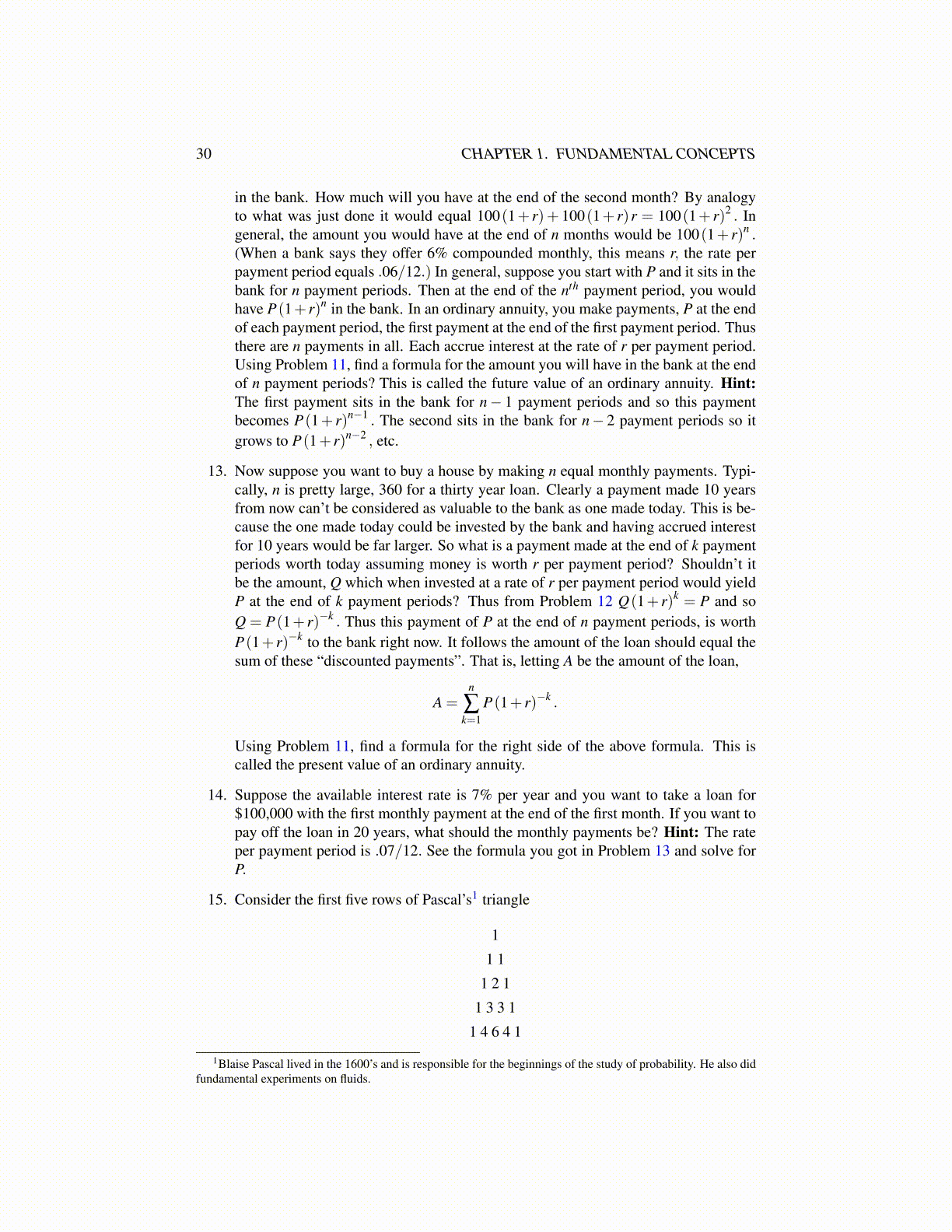
30 CHAPTER 1. FUNDAMENTAL CONCEPTS
in the bank. How much will you have at the end of the second month? By analogyto what was just done it would equal 100(1+ r)+ 100(1+ r)r = 100(1+ r)2 . Ingeneral, the amount you would have at the end of n months would be 100(1+ r)n .(When a bank says they offer 6% compounded monthly, this means r, the rate perpayment period equals .06/12.) In general, suppose you start with P and it sits in thebank for n payment periods. Then at the end of the nth payment period, you wouldhave P(1+ r)n in the bank. In an ordinary annuity, you make payments, P at the endof each payment period, the first payment at the end of the first payment period. Thusthere are n payments in all. Each accrue interest at the rate of r per payment period.Using Problem 11, find a formula for the amount you will have in the bank at the endof n payment periods? This is called the future value of an ordinary annuity. Hint:The first payment sits in the bank for n− 1 payment periods and so this paymentbecomes P(1+ r)n−1 . The second sits in the bank for n− 2 payment periods so itgrows to P(1+ r)n−2 , etc.
13. Now suppose you want to buy a house by making n equal monthly payments. Typi-cally, n is pretty large, 360 for a thirty year loan. Clearly a payment made 10 yearsfrom now can’t be considered as valuable to the bank as one made today. This is be-cause the one made today could be invested by the bank and having accrued interestfor 10 years would be far larger. So what is a payment made at the end of k paymentperiods worth today assuming money is worth r per payment period? Shouldn’t itbe the amount, Q which when invested at a rate of r per payment period would yieldP at the end of k payment periods? Thus from Problem 12 Q(1+ r)k = P and soQ = P(1+ r)−k . Thus this payment of P at the end of n payment periods, is worthP(1+ r)−k to the bank right now. It follows the amount of the loan should equal thesum of these “discounted payments”. That is, letting A be the amount of the loan,
A =n
∑k=1
P(1+ r)−k .
Using Problem 11, find a formula for the right side of the above formula. This iscalled the present value of an ordinary annuity.
14. Suppose the available interest rate is 7% per year and you want to take a loan for$100,000 with the first monthly payment at the end of the first month. If you want topay off the loan in 20 years, what should the monthly payments be? Hint: The rateper payment period is .07/12. See the formula you got in Problem 13 and solve forP.
15. Consider the first five rows of Pascal’s1 triangle
1
1 1
1 2 1
1 3 3 1
1 4 6 4 1
1Blaise Pascal lived in the 1600’s and is responsible for the beginnings of the study of probability. He also didfundamental experiments on fluids.